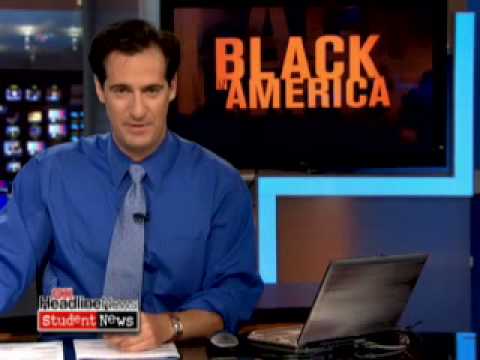CNN Student News Special: Black in America
Story Highlights:
All summer long, CNN Student News is publishing special Webcasts
On today’s show, we highlight CNN Presents: Black in America
Visit schools in two American cities that are targeting the dropout rate
(CNN Student News) — July 28, 2008
CARL AZUZ, CNN STUDENT NEWS ANCHOR: Hi, everyone. I’m Carl Azuz and this is CNN Student News. Thanks for taking a vacation from your vacation to check out our latest summer Webcast. Today, we’re focusing on a sensitive and sometimes controversial topic. But it’s also part of our country’s history, from slavery to the civil rights movement. Forty years after Dr. Martin Luther King’s death, CNN has launched “Black in America.” It’s a huge project that examines stereotypes and statistics and asks what it means to be black in America today. These special reports investigate health issues, like the devastating toll of HIV and AIDS on the African-American community. They also explore the progress of black men and women in the professional world and the black middle class.
One of the biggest topics that “Black in America” addresses is education and the disparities between black and white students. Soledad O’Brien visited a school in New York that’s working to close that gap.
(BEGIN VIDEO)
SOLEDAD O’BRIEN, CNN ANCHOR: Principal Elijah Hawkes of the James Baldwin School in New York City says his school has something most principals only dream about: a 94% graduation rate.
ELIJAH HAWKES, PRINCIPAL, JAMES BALDWIN SCHOOL: The only way one can do this work and do it well is if you believe that a student failing in your class is your responsibility.
O’BRIEN: It’s a new public school, made up mostly of transfer students and paid for with taxpayer money. The classes are very small; just 17 seniors last year. But what’s most surprising: many of the students were failing out before coming here. How bad were your grades?
MARK, STUDENT, JAMES BALDWIN SCHOOL: Failed every class.
O’BRIEN: Really?
MARK: Yeah.
O’BRIEN: So you came here as a failing student?
MARK: Yes.
O’BRIEN: What are your grades now?
MARK: It’s like B-minus.
O’BRIEN: Your graduation rate is significantly higher than the average graduation rate in New York City public schools. With far fewer students, I’ll give you, but much higher.
HAWKES: Having your voice heard can equate to passing your class.
O’BRIEN: Almost half the students are African-American. A Harvard University study shows black children start falling behind academically by age 3. A separate Harvard study found in urban areas, the average black student performs on a level about 4 years below his peers. Over a million students attend New York City public schools. About three-quarters are minorities and 70 percent are impoverished.
JOEL KLEIN, CHANCELLOR, NEW YORK SCHOOLS: For as long as anyone can remember in America, our African-American and Latino students are way underperforming white and Asian students.
O’BRIEN: Schools like Baldwin are fighting to change that.
MARK: I just thought if I could, like, if I was guided the right way, I would succeed.
O’BRIEN: The school’s success proves size matters…
source

